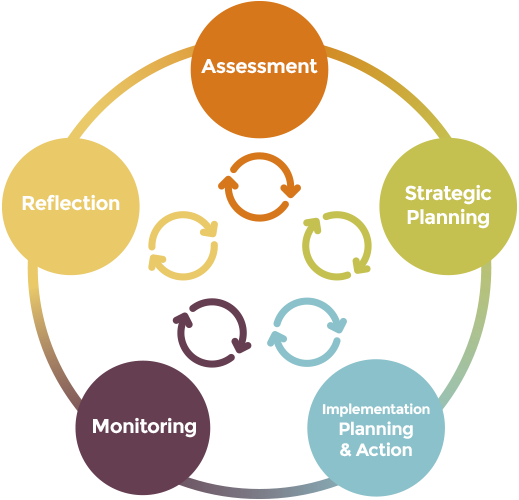The framework outlines a standard weed management plan that follows an adaptive management approach and considers risks and adaptation options under climate change.
It comprises five main planning components: (i) assessment, (ii) strategy and prioritisation, (iii) implementation, (iv) monitoring, and (v) reflection. Information is provided (in the surrounding boxes) on how each component under climate change may differ somewhat from a generic adaptive weed management approach. Further, each component is considered an iterative process, because the most effective responses to weed problems under climate change may not be known and outcomes may only be achieved after trying a range of options, assessing the responses, and making appropriate changes.

General components of weed management planning through an adaptation lens.
Find out more
Open allClose allUnder climate change, assessment may need to include:
- new weed threats from outside the region
- existing weed threats that may get worse
- new weed threats from changing land uses and other adaptation responses
Under climate change, strategic planning and prioritisation may be different because:
- an increasing number of potential weed problems may require stricter prioritisation to focus on weeds that impact what communities value
- priorities may need to shift substantially over time as new threats emerge
- increased coordination with national and state level strategies will be helpful for minimising regional effort
Under climate change, implementing weed management may need to be different because:
- the effectiveness of some forms of weed control is expected to decrease
- new weeds may need new forms of control
- control measures suitable for extreme events rather than average conditions may be a robust approach
Under climate change, monitoring may need to be different because:
- a cost-effective approach may involve lots of monitoring for new threats rather than immediate management of any new species detected
- widespread monitoring for new threats could involve high levels of community engagement
Under climate change, reflection may need to be different because:
- it may need to happen more frequently to ensure new threats detected by monitoring can be acted on quickly
- it may need to consider adaptation responses in other sectors or regions that affect weed distribution
